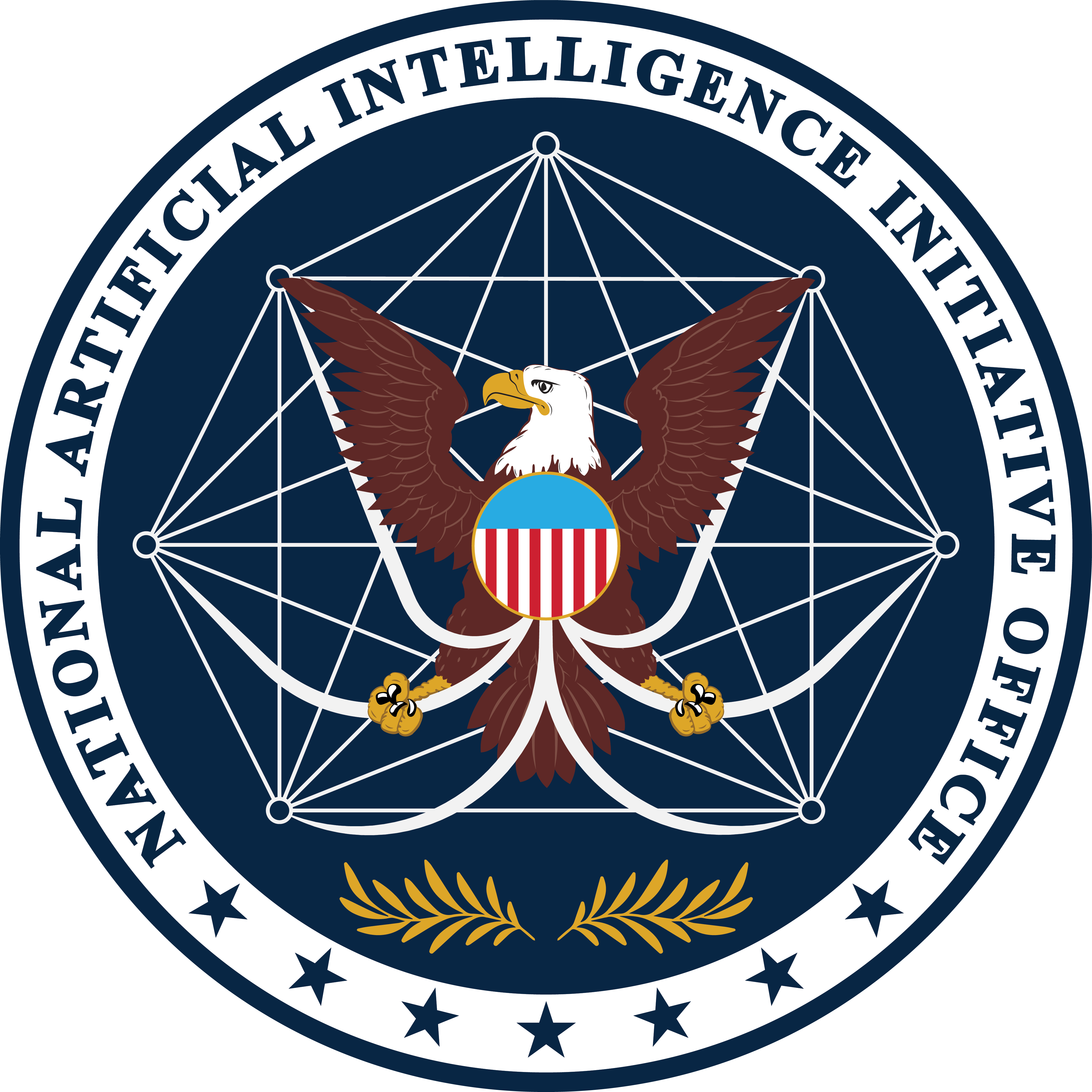The Artificial Intelligence R&D (AI R&D) Interagency Working Group (IWG) coordinates Federal AI R&D and supports activities tasked by both the NSTC Select Committee on AI and the Subcommittee on Machine Learning and Artificial Intelligence. This vital work promotes U.S. leadership and global competitiveness in AI R&D and its applications. The AI IWG reports investments to the AI R&D Program Component Area.
Overview
The Artificial Intelligence R&D Interagency Working Group (AI R&D IWG) was formed in 2018 to coordinate Federal AI R&D across 32 participating agencies and to support activities tasked by both the NSTC Select Committee on AI and the Subcommittee on Machine Learning and Artificial Intelligence (MLAI). Through the NITRD Subcommittee, the AI IWG will coordinate AI activities to advance the mission of the National AI Initiative Office (NAIIO).
Guided by the nine strategic priorities of the National AI R&D Strategic Plan: 2023 Update, the IWG gathers information from AI experts to ensure that government investment in AI R&D results in innovative applications to address the Nation’s challenges, take advantage of its opportunities, and promote U.S. leadership and global competitiveness. Details of many recent and ongoing Federal AI Research and Development programs and applications are available in the 2020-2024 Progress Report: Advancing Trustworthy Artificial Intelligence R&D.
Strategic Priorities
-
- Make long-term investments in fundamental and responsible AI research.
- Develop effective methods for human-AI collaboration.
- Understand and address the ethical, legal, and societal implications of AI.
- Ensure the safety and security of AI systems.
- Develop shared public datasets and environments for AI training and testing.
- Measure and evaluate AI technologies through standards and benchmarks.
- Better understand the national AI R&D workforce needs: Grow the AI R&D workforce to ensure America leads the AI innovation of the future.
- Expand PPPs to accelerate advances in AI and strengthen the Nation’s R&D ecosystem.
- Establish a principled and coordinated approach to international collaboration in AI research.
Co-Chairs
 |
Steven Lee |
 |
Michael Littman |
 |
Nikunj C. Oza |
Technical Coordinator
 |
Faisal D’Souza |
NITRD AI R&D Federal Investments Dashboard
This dashboard illustrates the Federal budget for nondefense AI R&D investments across several fiscal years. It provides both an overall budget rollup, as well as breakdowns of investments by agency and by NITRD Program Component Areas (PCAs), major subject areas for Federal IT R&D.
Learn more about Federal Agencies investments in AI R&D which shows sustained investments in key priority R&D areas: AI R&D Federal Investments Dashboard.
AI Research Program Repository
The AI Research Program Repository provides a searchable directory of AI-relevant Federal grant programs and collaboration opportunities. In this repository, programs can be filtered by the offering department or agency, the particular AI strategy(ies) topic that is covered (as outlined in the 2020–2024 Progress Report: Advancing Trustworthy Artificial Intelligence R&D), and whether the program supports “core AI” research, which advances the foundations of AI, or “other AI”, which refers to use-inspired AI research in fields such as cybersecurity or materials discovery. This repository currently includes over 220 programs and will be updated as new programs are announced.
The National Artificial Intelligence Initiative Office (NAIIO)
The National AI Initiative Office was established in January 2021 to oversee and implement the National AI Initiative Act (NAIIA).
The NAIIO along with the NITRD Subcommittee directs the NITRD AI R&D IWG to coordinate Federal R&D investment in AI.
Visit AI.gov to learn more about the NAIIO, it’s charge, and its significant activities that advance U.S. leadership in AI.
IWG Coordinated Activities
- Federal Register Notice: 90 FR 9088, “Request for Information on the Development of an Artificial Intelligence (AI) Action Plan”, February 6, 2025. Public Responses March 15, 2025.
- AI Research Program Repository, April 2024.
- Federal Register Notice: 87 FR 5876, “Request for Information to the Update of the National Artificial Intelligence Research and Development Strategic Plan”, February 2, 2022. Public Responses March 2022.
- Artificial Intelligence & Wireless Spectrum: Opportunities and Challenges, WSRD IWG Workshop, Griffiss Institute, Rome, NY (August 28-29, 2019).
- Artificial Intelligence and Cybersecurity Workshop, College Park, MD (June 4-6, 2019).
- Federal Register Notice: 83 FR 48655, “Request for Information on Update to the 2016 National Artificial Intelligence Research and Development Strategic Plan”, September 26, 2018. Public Responses October 2018.
IWG Coordinated Publications
- 2020–2024 Progress Report: Advancing Trustworthy Artificial Intelligence R&D, July 2024
- National Artificial Intelligence Research and Development Strategic Plan 2023 Update, May 2023.
- Artificial Intelligence and Cybersecurity: A Detailed Technical Workshop Report, June 2, 2020.
- Artificial Intelligence and Cybersecurity: Opportunities and Challenges: Technical Workshop Summary Report, March 2020.
- 2016-2019 Progress Report: Advancing Artificial Intelligence R&D, November 2019.
- The National Artificial Intelligence Research and Development Strategic Plan: 2019 Update, June 2019.
- The National Artificial Intelligence Research and Development Strategic Plan, October 2016.




